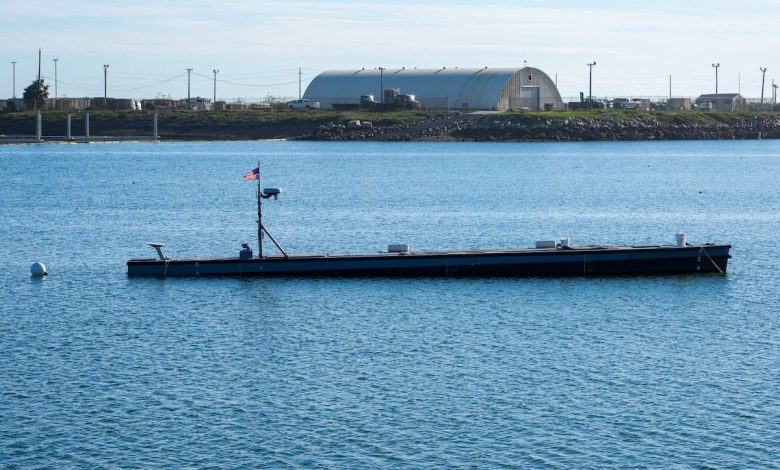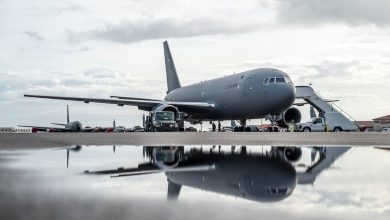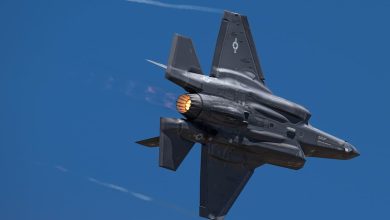How the Marine Corps is testing a ‘narco-boat’ for resupply efforts

ARLINGTON, Va. – The U.S. Marine Corps is testing out an autonomous system inspired by a “narco-boat” to bolster resupply efforts, as the service focuses on island hopping and projecting power from land to sea, according to the head of the Marine Corps Warfighting Laboratory.
In addition to delivering two Naval Strike Missiles for the Corps’ anti-ship missile system, the autonomous low-profile vessel the Marine Corps is experimenting with also aims to better get critical supplies like food to forward deployed and distributed Marines, Marine Corps Brig. Gen. Simon Doran said at the Defense News Conference on Wednesday.
“Truth be told, this is just a narco-boat,” Doran said. “We stole the idea from friends down south. And so this is 55 feet long, completely autonomous. It’s able to go hundreds or thousands of miles. It’s able to carry weapon systems that we have that are new. … It can carry pretty much anything you want to put in it.”
Inspired by narco-boats, which are used by traffickers to smuggle illicit substances across bodies of water, the unmanned vessel remains close to the water-surface level to cut down on the likelihood of detection as it assists with logistics capabilities.
The service tested the logistics supply drone at the Army’s Project Convergence Capstone in February at Camp Pendleton, California, where the Marine Corps trained a cook in 21 days to operate the system off the islands of Japan.
The Army spearheads the Project Convergence to test out advanced technology and capabilities in modern warfare as part of a joint, multinational exercise.
The autonomous low-profile vessel is particularly important because it allows forces to resupply food, fuel and ammunition without jeopardizing the safety of Marines, Doran said.
“If you have that unit located inside a weapons engagement zone, contested logistics and the ability to maneuver in the littorals becomes key,” Doran said. “And for that, what we’re looking at is trying to acquire systems that we deem risk worthy, meaning that we don’t necessarily want to just waste them, but we’d rather put something in there that’s autonomous, that doesn’t have humans on it that can do some of these higher risk missions without having personnel put in that riskier situation.”
This system is something the Marine Corps wanted “yesterday,” but testing is ongoing, Doran said. The Marine Corps Warfighting Laboratory received two prototypes in 2023.
The vessel is expected to join the III Marine Expeditionary Force based in Okinawa, Japan, for further evaluation this fall, he said.
The service hopes to purchase the vessels in the next several years, Marine Corps leaders said at the 2023 Defense News Conference.
Read the full article here






